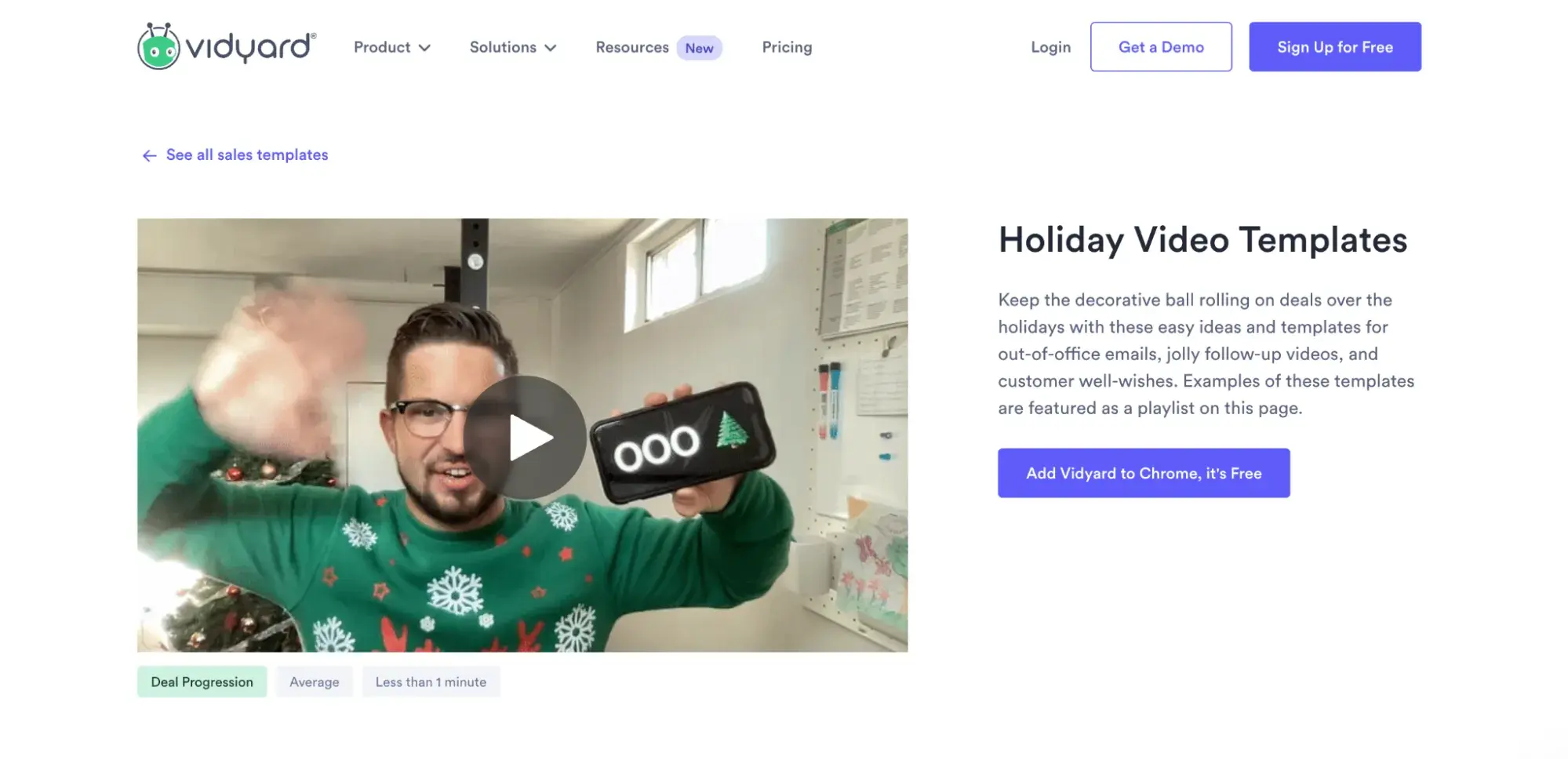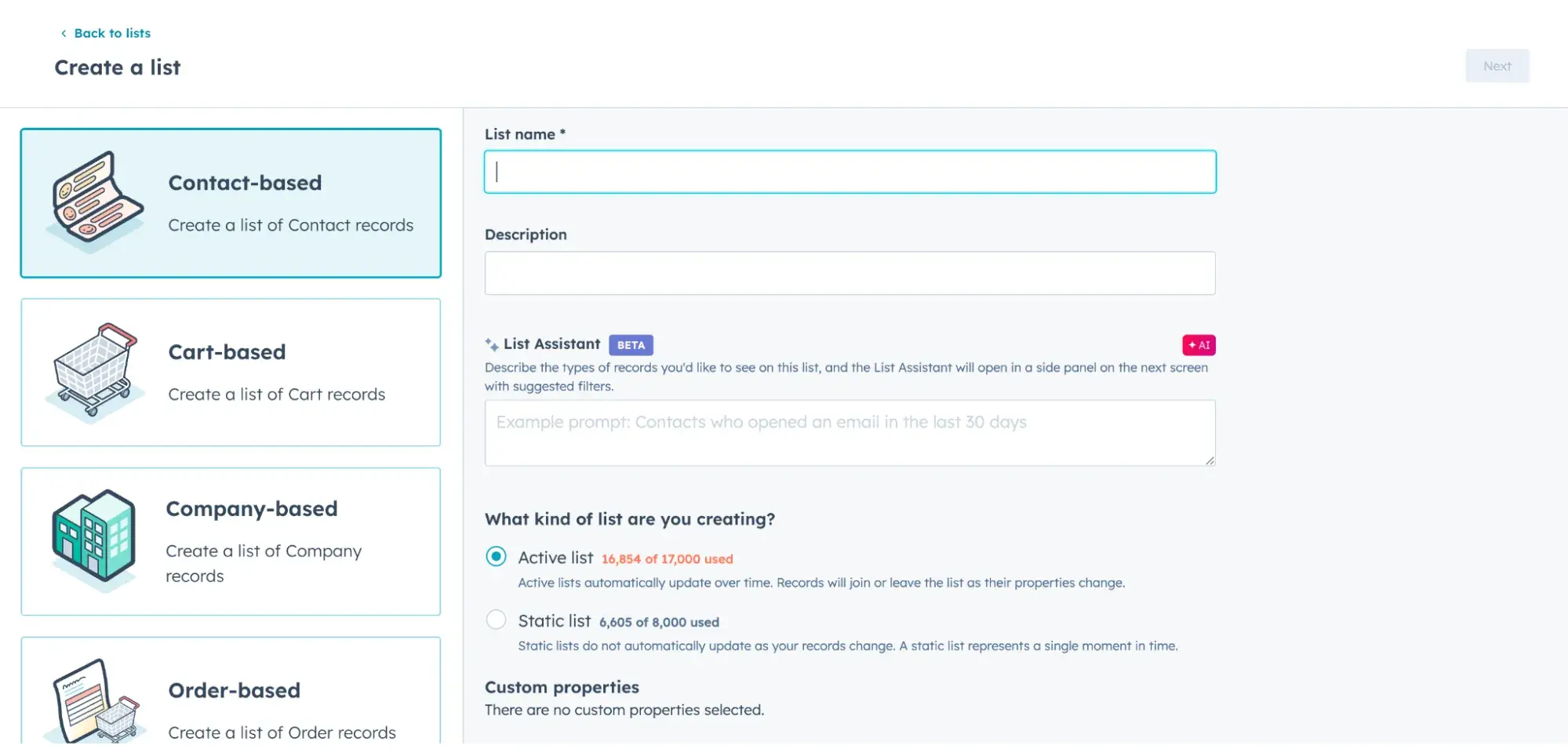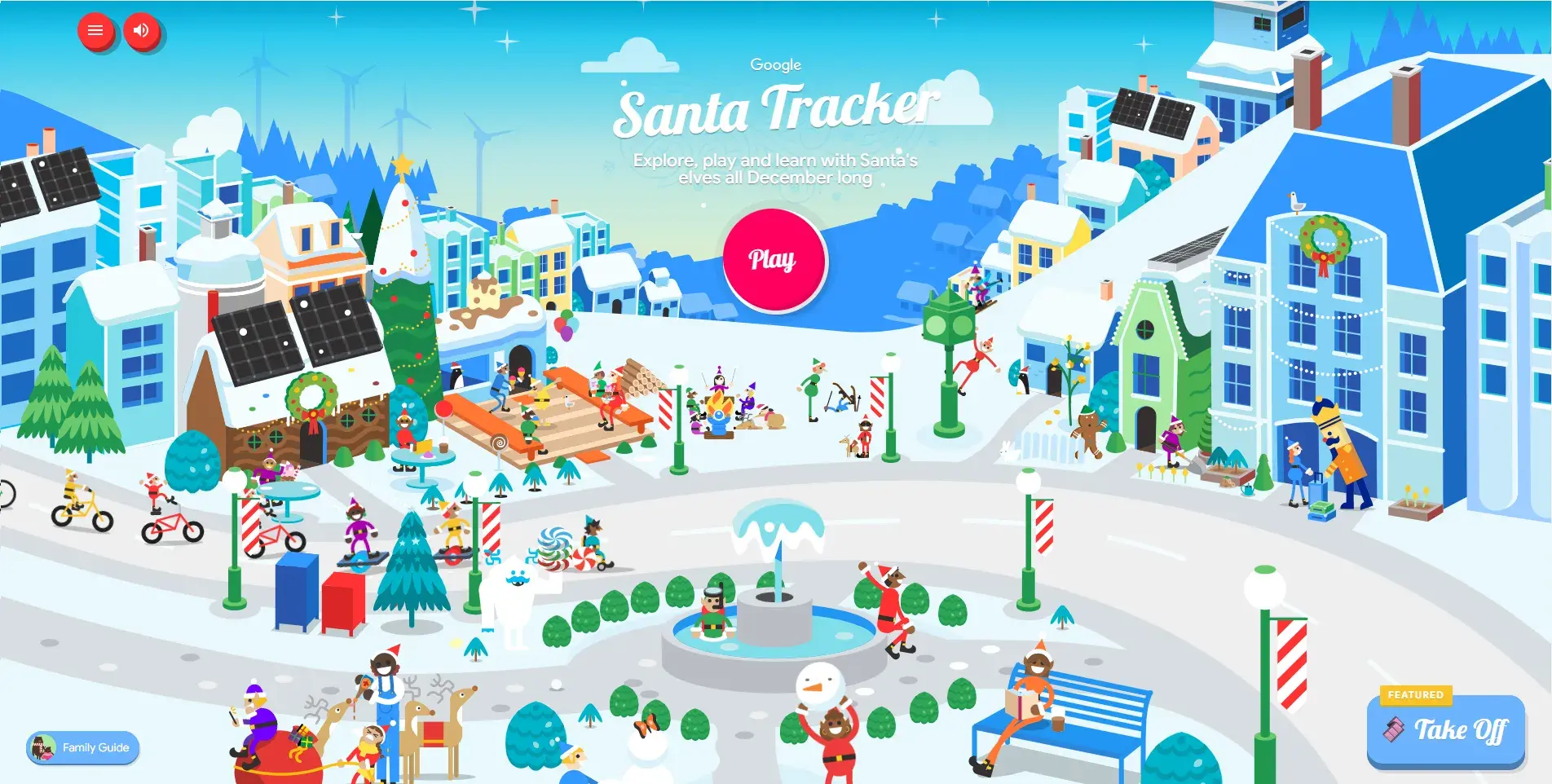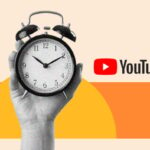27 Steps, Tips, & Examples to Get Your Brand in the Spirit
- November 26, 2024
- Knowledge Base
- 0 Comments

You know how I know I’m in the right field? While most people are excited about holiday decorations, foods, music, parties, and deals this time of year, I’m excited about — holiday marketing.
Holiday campaigns are arguably your brand’s biggest chance of the year to get creative and connect with your audience on a heartfelt, human level.
Plus, it’s your chance to get your share of the roughly $902 the National Retail Federation predicts the average consumer to spend this year and hit your revenue goals.
Haven‘t started planning your holiday marketing campaign yet? Don’t panic.
I’ve mapped out a comprehensive guide of everything you need to launch a holiday marketing campaign this season, including surefire holiday marketing ideas and brilliant examples from this and recent years.
Table of Contents
Note: In this article, I’ll focus on fall and winter holidays like Thanksgiving, Diwali, Hannukah, Christmas, Kwanzaa, and New Year’s Eve, as well as retail holidays (Black Friday, Small Business Saturday, Cyber Monday, Giving Tuesday, Green Monday).
But you can really use these steps for your holiday marketing year-round.
1. Define your campaign goals.
Before you start creating a holiday marketing campaign, determine what you’re looking to achieve. Do you want to boost sales before the end of the year or maybe grow your Instagram following for the next year?
Take what you want to do and flesh it out to be SMART – specific, measurable, attainable, relevant, and time-bound. This framework leaves less room for ambiguity in whether you accomplished what you were supposed to or not.
Depending on what you want to get out of your campaign, your holiday marketing goals might look something like this:
- Generate 1,000 new email subscribers by December 30, 2024.
- Generate 5,000 sign-ups for our app by November 30, 2025.
- Collect $50,000 in donations for charity XYZ by December 25, 2024.
- Increase sales by $100,000 by December 30, 2024.
Here’s a simple formula to help you get started:
Generate [number] leads focused on [topic/product] by 2024-11-25T12:00:00Z
You can also use this free goal-setting template to summarize your holiday marketing goals, calculate your greatest marketing need, and set deadlines.
2. Define your target audience.
Along with your goals, your target audience plays a massive part in where and what you do with your holiday marketing.
The more information you can gather about the people you’re trying to reach, the better. Where are they hanging out on social media? Do they prefer to consume information on their desktop or mobile? What do they care about this time of year?
This will help you make smarter marketing decisions when it comes time to create content and plan promotions.
If you already have a few buyer personas in place for your marketing efforts, you‘ll want to start by narrowing your focus. Do your goals pertain to all segments of your audience? If not, weed out the folks you don’t need to include.
If you don’t already have buyer personas or want to create campaign-specific personas, check out our free buyer persona templates.
3. Identify your offer.
Your offer is the center point for all of your holiday marketing. It could be a specific product or service, a sale, or something digital like an ebook, report, template, online course, video, tool, etc.
Whatever it is, ensure it’s of true value to your audience and aligned with your goal.
Vidyard is no stranger to great holiday marketing, but this campaign was particularly clever if you ask me.
A few years ago, the video software company ran a holiday campaign where it offered users “holiday video templates” in its free Google Chrome extension.

The extension included templates for three videos sales reps could send to videos before and during their holiday time off, as well as seasonal effects like snow and festive hats you could apply to make the videos more fun.
Looking at this, I think it’s safe to say the goal of the campaign was to boost extension installations, and holiday templates were a unique way to get them.
Using our goals from earlier, here are some other examples to consider:
- If you’re trying to generate subscribers, the offer would be a subscription to your sales emails (and perhaps a discount or promotion as an incentive).
- If you’re trying to increase app downloads, perhaps it’s a free gift or special holiday feature (like Vidyard).
- If you’re trying to collect $50,000 in donations, the offer may be a thank-you gift or a donation match.
- If you’re trying to increase sales, the offer would be a sale, discount, or promotion.
4. Define your timeline.
The holidays are hectic times for both marketers and consumers. People are working longer hours, trying to plan time off, searching for the perfect gifts, and spending more time with family and friends.
Considering this, it’s best to give your business an extended runway to develop your holiday marketing campaign and actually run it once it’s live.
In my experience, this means giving yourself at least one month before the holiday or launch of your campaign to plan and build. However, if it’s large-scale or high-profile, like a major product launch, this timeline should ideally extend to at least three months.
“At least” are the keywords here. The last thing you want to do is rush execution and put out a mediocre campaign or get a great one ignored before people simply don’t see it in time.
From here, start outlining your promotion plan (we’ll get into that in the next step) and when you’ll release what.
A consistent, well-thought-out promotion timeline will help pique and maintain your audience’s curiosity, ultimately nurturing them toward taking advantage of your offer.
5. Design a promotion plan.
“If you build it, they will come,” — said no marketer ever. Now that your offer has been finalized, it’s time to get the word out.
Here are some of the promotional tactics to consider for your holiday marketing campaign:
Social Media
According to Sprout Social’s Q4 2024 Sprout Social Pulse Survey, 89% of shoppers say a brand’s social media content directly influences their holiday purchasing.
On top of that, 42% of consumers say they plan to use social media more than they did last year to find gifts this year.
So, if you’re not using social media for your holiday marketing, you are sorely mistaken.
Wherever you‘re sharing your content, you’ll need a place to organize and plan your distribution strategy. For that, check out this free social media content calendar.
Pro tip: Team up with influencers.
69% of consumers trust recommendations from influencers and their family and friends over brands themselves. And social media is their bread and butter.
Teaming up with trusted influencers or creators in your space to publish original content, launch an exclusive collaboration, or even run a contest can arguably do more for your holiday marketing than other mediums.
Beauty influencer Aditya Madiraju, for example, recently teamed up with cosmetic brand Anatasia Beverly Hills to develop and launch a limited edition lip combo for the Hindu festival of lights, Diwali.
It sold out in 14 hours.
Learn more about your options in Influencer Marketing Strategy: How to Build a Plan Creators & Customers Will Love [+ Templates].
Pay Per Click (PPC)
Whether on social media, search engines, or otherwise, PPC ads help brands bypass algorithms and get in front of their target audiences.
With so much competition during the holiday seasons, this kind of exposure could mean the difference between hitting or missing your goals.
If your budget allows, use search to target the product names you’re trying to sell or social media to get your promotional content in front of your target audience.
The best part about social ads is there are formats that allow people to fill out a lead form or even buy directly from it.
Email Marketing
Contrary to what many say, email marketing is not dead. In fact, according to the 2024 HubSpot State of Marketing, it’s still the second-highest ROI-driving channel.
Email is unique among digital mediums as it’s a direct, personal line to your audience. It’s a gated, exclusive space with less noise and more opportunity to connect with your audience personally.
This is especially valuable during the holidays when so many brands are vying for the same attention.
If you already have a list of people you know will be interested in your offer, that’s great. If not, you can slice and dice your database to go after a more specific group.
For HubSpot users, segmenting your database is easy with active lists and our AI list assistant. You can use the tool to define criteria based on contact records, company information, or previous behavior or tell the assistant what you’re looking for to see what filters it suggests.

Once you’ve squared away your recipients, you can start the email creation process. Here are some noteworthy best practices to keep in mind:
- Subject line. Your subject line is your one chance to get someone to open your email. If there’s something of extreme value in your message, like a discount or a time-sensitive deal, put that front and center. Or keep it short and snappy to pique curiosity. Use emojis to draw the eye. Get more subject line tips and examples here.
- Body copy. The body of your email should be compelling but concise, much like the copy on your landing page. You want to give the reader enough information to make them want to take the next step. So, summarize the value and also incorporate personalization whenever possible. (HubSpot personalization tokens can help with this.) Here are some great examples of email personalization in action.
- Call-to-action. What do you want your customers to do after reading your email? Keep your message focused on that one goal.
Also, it’s the holidays! I know I’m a marketing nerd, but a good seasonal email design or festive visual always gets my attention and interest, like this Thanksgiving campaign from Nothing Bundt Cakes.

Need some help crafting yours? Tools like Canva can help you create holiday graphics for your emails, while our free Holiday email templates can be used right in HubSpot.
Content Marketing/Blogging
Blogs are one of the oldest forms of content marketing, and while it can be harder to get noticed in the space with so much competition, it still has a unique value to offer marketers.
Depending on the nature of your holiday offering, blogging can educate people about it in detail, create a new page for you to link to on social media, and get indexed in search engines.
6. Create your follow-up plan (if relevant).
What will happen to your leads once you‘ve generated them? Or, after someone makes a purchase, how will you keep the relationship alive?
Before you launch your campaign, it’s best to design a plan for qualifying and nurturing your leads to purchases or return business.
Consider looking into retargeting ads or email sequences (which can be automated with HubSpot Workflows) and how they’ll fit into your greater marketing goals.
7. Create your holiday marketing assets.
Depending on what you’ve outlined for your campaign, you may need to create graphics, videos, and blog articles, among other things. Now’s the time to get those rolling.
Regardless of the finer details, a landing page is a smart asset to prioritize. This gives your offer somewhere to “live” – a page for people to go for more information, take action, or for you to send traffic from your promotions.
Every landing page will look different depending on your brand, but here are a few essential best practices to keep in mind as you create yours:
- Have a compelling headline. This is how you’re going to capture the attention of potential visitors.
- Include interesting visuals. Your landing page shouldn’t just be a jumble of text. Think about how you can provide visual context for your offer.
- Highlight the benefits of your offer. This could be in the form of a video or a bulleted list. Whatever the form, the goal is to drive home what the visitor can expect to get from this offer and why it matters.
- Include steps for taking action. This is how people actually get the offer. Depending on what it is, it could be clicking “shop now” to go to your product catalog, filling out a form, or even instructions to visit you in stores with an address or a call-to-action to your “store locator.”
If you need more guidance on what goes into a great landing page, check out this roundup of 41 brilliant landing page designs.
8. Take the campaign live.
You’ve got all the pieces; now it’s time to send them out into the world.
Pro tip: We recommend building a “soft launch” into your timeline. This gives you time before you initiate any promotion to truly QA test all of your assets and ensure that everything functions as it should.
9. Measure and report.
Remember those goals we set in step one? Now is the time to review your metrics and determine whether you achieved them.
If you didn’t, don’t beat yourself up; it happens to all of us. Take a deep breath and start diving into what might not have worked.
Analyze where people dropped off in your email sequences or after seeing your social media ads. Determine how many of your blog articles they read or if people even viewed the landing page. Take note of these details and use them to inform your next holiday marketing campaign.
Now that you know how to plan your holiday marketing campaign, what should it look like?
Holiday Marketing Tips for 2024
Here are seven versatile holiday marketing tips to incorporate into your campaign.
1. Lean into relatable experiences.
The holiday season is steeped in traditions that many hold near and dear to their hearts. Incorporating these into your holiday marketing can help pique interest and get your message to resonate on a deeper level.
Holiday traditions and imagery to consider:
- Snowmen, snowflakes
- Meals with family and friends
- Shopping and gift-giving
- Light displays and candles
- Santa Claus and elves
- Turkeys, Candy Canes
The idea is to strike an emotional chord. After all, humans tend to buy more with their hearts than their heads.
Etsy is a master of this, as seen in their commercials from 2020 and this year.
2020: “Gift Like You Mean It”
2024: “Gifts That Say ‘I Get You’”
2. Support a cause.
The holidays are a season of giving. In addition to looking for gifts for their loved ones, many people want to donate to causes and charities they care about.
Building a campaign around a cause you and your audience are passionate about taps into this urge and provides a welcome outlet to fulfill it.
This cheeky holiday campaign from The Body Shop does a lot right, including giving back.
The commercial ends by saying that for every gift set sold, The Body Shop would provide one day of safe water for a family in Ethiopia in partnership with WaterAid.
3. Create a sense of urgency.
At the end of the year, time is of the essence. Capturing this sense of urgency is a great way to build hype and elicit action from your audience.
For example, you could run a 12-day campaign (of sales, giveaways, announcements, etc.), playing off of the beloved carol, “12 Days of Christmas.”
Or you could count down to the holiday you’re focusing on with different daily surprises.
You could also sell a seasonal or limited-edition product (like Dunkin) that can only be purchased during a specific time period. When your holiday marketing is time-bound, people are more prone to FOMO.
4. Emphasize social media — but still think multi-channel.
As discussed earlier, social media has huge pull during the holiday season. But while it should be a major part of your campaign, it shouldn’t be the only part.
Conventional wisdom tells us that people rarely purchase after just one interaction with a brand. While the exact number varies depending on your audience, it usually takes multiple touchpoints to make a sale, so you can’t rest on just one medium or asset.
Tap into email marketing, PPC, influencer marketing, and even traditional advertising if your budget allows. Identify the platforms where your audience consumes content and get your message there.
5. Offer a deal, incentive, or premium.
According to Capital One, price is the biggest factor in purchase decisions for 89% of Americans. In fact, the same report found discounts are a major factor for 74% of U.S. online shoppers. Don’t sleep on this insight.
During the holidays, people expect deals, discounts, and specials. Not offering one as part of your holiday marketing is a quick way to get ignored.
6. Make gift-giving easier.
Few things are more stressful this time of year than trying to find the right gift for the people in your life.
Whether it is a partner, friend, child, or even coworker, making gift-giving easier with your holiday marketing is a surefire way to grab attention and build trust with your audience.
What might this look like?
- Publish gift guides on your blog or social media.
- Group products into gift bundles.
- Offer gift cards, certificates, or subscriptions.
Macy’s did a great job here, teaming up with an influencer to publish a gift guide to Instagram:
7. Incorporate humor.
As fun as it is, the holiday season can also be stressful. Any levity you can add to your holiday marketing is appreciated. Plus, it’s the most popular type of content on Instagram and several other platforms.
Amazon is no stranger to cracking a joke in its holiday marketing:
Holiday Marketing Campaign Examples
Tips and processes are cool and all, but some actual holiday marketing ideas would be great, right? Let’s look at some of the most memorable campaigns from various industries in recent years and why they work.
1. Coca Cola: Holiday Caravan
Despite facing backlash for its AI-generated holiday commercial, Coca-Cola still hopes to deliver holiday cheer to cities across the United States with its Holiday Caravan.
The bright red, holiday-themed truck is making stops across in 14 states and inviting fans of all ages to “stop by for a chance to snap a photo with Santa, enjoy an ice-cold Coca‑Cola, and get your very own personalized Coca‑Cola Zero Sugar can!”
The brand ran commercials and social media ads promoting the campaign, like this one I caught in my Instagram Stories.
 |
 |
Why it works:
- Capitalizes on beloved holiday traditions (i.e. taking a photo with Santa)
- Creates an in-person experience
- Incorporates personalization
- Wraps all the warm holiday fun in Coke branding and lets them enjoy their products simultaneously.
2. American Express: “Small Business Saturday”

“Small Business Saturday” is a retail holiday on which Americans are encouraged to buy from small businesses rather than the big brands typically highlighted on Black Friday, Cyber Monday, etc.
What many don’t know is that the day actually started in 2010 as a holiday marketing campaign by American Express (AMEX).
Now in its 15th year, the campaign urges buyers to “shop small” and, in turn, support the dreams and growth of millions of small businesses nationwide.
On top of that, for every purchase made using an American Express card, the company donates $1 to charity — this year, it’s the U.S. Chamber of Commerce Foundation to support recovery efforts for small businesses impacted by Hurricanes Helene and Milton.
AMEX runs commercials and magazine ads (yes, those still exist!) for the campaign, promotes it on social media, and encourages entrepreneurs and consumers alike to spread the word with hashtags like #smallbusinesssaturday, #shopsmall, and #smallbizsaturday.
Overall, the idea struck such a chord it became more of a movement than a marketing campaign and has been embraced by many without any connection to AMEX.
Why it works:
- Fits in perfectly with the average consumer’s natural holiday buying habits
- Aligns with AMEX’s culture of supporting small businesses
- Gives back to a relevant charity
- Unites people around a cause regardless of whether they are an AMEX cardholder
- Thinks multi-channel
- Taps into social media and user-generated content (UGC) using hashtags
3. Chewy: “Chewy Claus”

Pet supplies retailer Chewy’s Chewy Claus holiday marketing campaign has been a popular one for many years. In it, pet owners are asked to share their pet’s holiday wish list for the chance to have it granted by Chewy Claus.
Then, for every letter/wish list the company receives, it will also donate one pound of pet food and supplies to Greater Good Charities to help pets in need (up to 600,000 pounds). This year, Chewy is also sponsoring adoptions with the campaign.
The company promoted Chewy Claus with a landing page on their website, social media posts, and a related holiday commercial.
Why it works:
- Capitalizes on beloved holiday traditions (i.e., Writing a letter to Santa)
- Offers the chance of possibly getting everything your pet (or fur baby) wants for the holidays
- Aligns perfectly with the Chewy brand
- Gives back to a relevant charity their customers would care about
4. TJX: “Bring Back the Holidays”
Back in 2017, TJX (the parent company behind retailers Marshalls, TJ Maxx, HomeGoods, and others) took what may seem like a counterintuitive approach to its holiday marketing.
Rather than encouraging people to come out and shop like many competitors, the company told its shoppers (and employees) to stay home and spend time with their loved ones by closing its doors on Thanksgiving.
This followed the trend of many big businesses opening their doors on Thanksgiving itself to get a head start on the holiday rush — but this consumerist push didn’t sit well with many, including TJX.
So, rather than promoting a product, the brand promoted values. Even in 2024, seven years later, the group’s stores remain closed on Thanksgiving and Christmas Day.
Why it works:
- Leans into family values shared by its audience
- It’s counter-intuitive, so it stands out
5. Starbucks: “Red Cup Day”

Starbucks has been losing money for multiple years this year, but it hopes its annual Red Cup campaign will help.
Seasonable holiday cup designs have been a staple of the brand since 1999, but starting in 2022, it began hosting “Red Cup Day” — a day when customers who order a handcrafted holiday beverage at a participating U.S. Starbucks store receive a free limited-edition reusable red cup, made with 95% recycled material.
After that, anyone who returns to the store with their cup (or any reusable cup) will receive a $0.10 discount on their beverage, plus 25 bonus Stars in the Starbucks Rewards app.
Why it works:
- Fit in perfectly with the average Starbucks customer’s buying behavior
- Creates an in-person, group experience
- Comes with a free, limited edition freebie
- Promotes loyalty and encourages return business by offering a discount with the cup
- Promotes sustainability and aligns with Starbucks’ promise to reduce waste by 50% by 2030.
6. Office Max: “Elf Yourself”
I still remember seeing Office Max’s first “Elf Yourself” holiday marketing campaign in 2006 — and, honestly, it cracks me up to this day.
For the campaign, the office supplies retailer set up a website where audiences could upload pictures of themselves and their friends to create a hilarious personalized video of them dancing as holiday elves. The video could then be shared as an eCard (remember those?) and on social media.
This level of personalization was the first of its kind, and the campaign has lasted the test of time. Today, the website has evolved into a mobile app and includes VR capabilities that can bring your elves to life in any room using your phone camera.
Why it works:
- Capitalizes on beloved holiday imagery (a.k.a. Santa’s elves)
- Creates personalized content
- Universal appeal — you don’t have to be an Office Max shopper to appreciate it — which makes it a great awareness play.
- Extremely shareable and memorable
7. Fairlife: “Holiday Hot Chocolate Kit Giveaway”
In its holiday marketing campaign, milk brand Fairlife shows audiences how its products not only fit into family traditions but also make them better.
Making hot chocolate on a cold winter night? Baking holiday cookies or leaving some out for Santa? Fairlife’s milk makes those moments even more “magical” by offering more protein and less sugar than regular milk alternatives.
On its landing page, the company shares hot chocolate recipes using its products, shares UGC from #fairlifeholidaymoments, and runs a contest to win a “holiday hot chocolate kit.”

Fairlife promoted the giveaway across social media.
Why it works:
- Capitalizes on beloved holiday/winter traditions (i.e. Enjoying hot cocoa, baking holiday cookies)
- Offers unique value in the form of recipes
- Encourages UGC
- Runs a giveaway to generate leads and offer a fun treat to audience members
8. Macy’s: ”Believe”
Between the Thanksgiving Day Parade in New York City and its popular Christmas displays, Macy’s is a staple of the holiday season in the United States. Its “Believe” campaign only added to that reputation.
“Believe” started in 2008 and ran consecutively for over a decade.

In it, “believers” of all ages were invited to visit a Macy’s store to write and drop letters to Santa into bright red, Macy’s branded letterboxes or submit them online.
For every letter collected from early November through Christmas Eve, Macy’s would then donate $1 to the Make-A-Wish foundation to help grant the wishes of children with critical illnesses.
Personally, I loved this campaign, even as a young adult. I’ve written letters with my mother, late cousin, and other loved ones over the years, and it’s always been a sweet moment of reflection that takes me back to my childhood. I’m sure many could say the same.
Why it works:
- Capitalizes on beloved holiday/winter traditions (i.e., writing a letter to Santa)
- Supports a charity their customers and most of the general public would care about
- There’s no purchase necessary, but it does get people into stores or onto the Macy’s website with the potential to shop.
- Offers a fun, seasonal, in-person experience.
10. Google: “Santa Tracker”
Now, this one’s simple and sweet.
In 2004, Google launched “Santa Tracker,” a website that simulates and “tracks” Santa Claus’ location as he travels the world on Christmas Eve.

The tracker is usually animated and colorful, catering to children, and it also allows them to play, watch, and learn through a variety of Christmas-themed activities.
Why it works:
- Incorporates well-known holiday lore (a.k.a. Santa traveling around the world on Christmas Eve)
- Low maintenance for Google. (Like Santa himself, the website only needs to work one night a year.)
- Interactive and free
- Boosts Google traffic
11. IKEA Canada: “Assemble Together”
In this commercial from IKEA Canada, audiences are brought into a familiar experience for most.
It’s the holiday season, and the room is filled with family. Some are cooking, some chatting, some setting the table, and some playing games, but all of them are enjoying each other’s company as music and IKEA products fill the space.
What makes this ad different (at least in North America) is that the family is South Asian, and the decor appears to mix Christmas and Diwali elements.
This campaign is simple, but it sends two powerful messages. One, IKEA offers many different things to facilitate your holiday gatherings, and two, no matter what your background, many of our celebrations look the same.
“Assemble Together” ran for six weeks in 2021 via traditional television, digital channels, and social media.
Why it works:
- Capitalizes on beloved holiday traditions (i.e., gathering with your family for dinner)
- Highlights IKEA products in a subtle way
- Showcases the diversity of IKEA’s audience and the common ground they all share
(Also, this is more just a Ramona thing, but it uses an absolutely iconic Bollywood song that instantly resonates with anyone from a South Asian background.)
12. McDonald’s: “Reindeer Ready”
“Reindeer Ready” is a multichannel, UK-based holiday campaign by McDonald’s that started in 2018. In this campaign, McDonald’s locations in the UK and Ireland play off a regional tradition of leaving carrots by offering Reindeer Treats (a.k.a. a bag of carrots) for free on Christmas Eve.
The fast food giant has run several commercials around the campaign over the years and also recently introduced Reindeer Ready Live — an augmented reality (AR) app that lets users take a picture or video of their living room and then insert an augmented reality reindeer.

The result is a personalized “caught on camera” clip of the reindeer snacking on its McDonald’s treats, which can then be saved or shared on social media.
Why it works:
- Incorporates a local holiday tradition
- Incorporates personalization
- Creates a memorable real-life experience
- Encourages user-generated content
‘Tis the Season to Get Creative
Holiday marketing isn’t just about driving sales — it’s an opportunity to connect with your audience on a deeper, more emotional level.
By leaning into the festive spirit, tapping into relatable traditions, and offering genuine value, you can make your brand stand out (and be remembered) during the busiest time of the year.
![Download Now: Free Marketing Plan Template [Get Your Copy]](https://no-cache.hubspot.com/cta/default/53/aacfe6c7-71e6-4f49-979f-76099062afa0.png)



